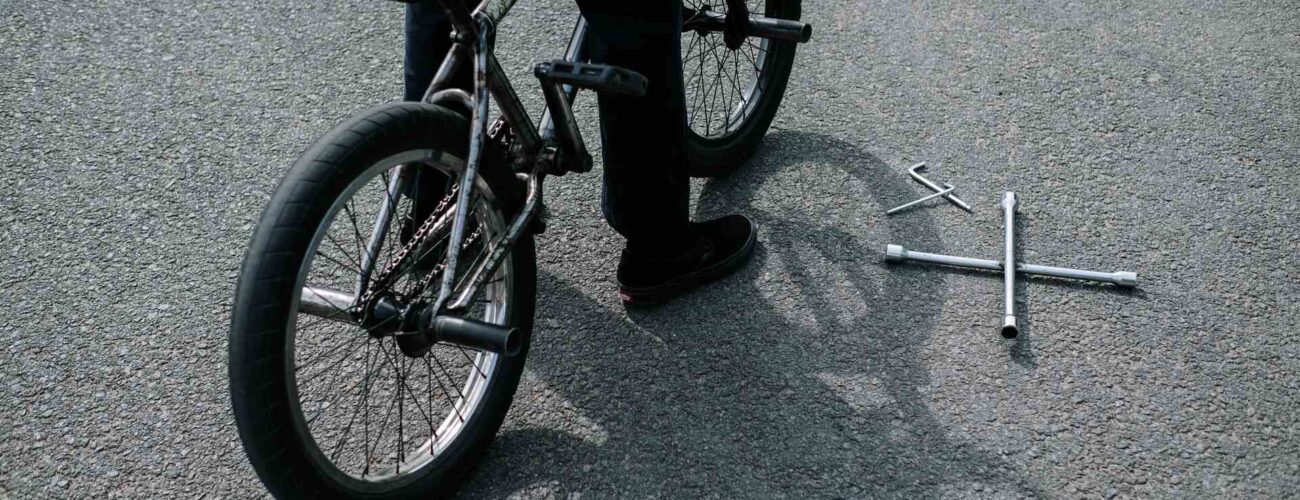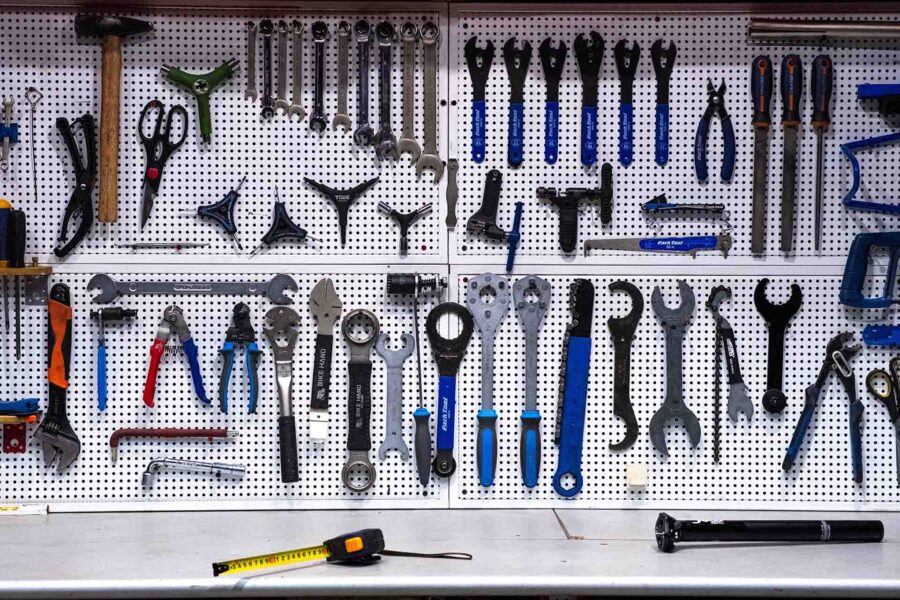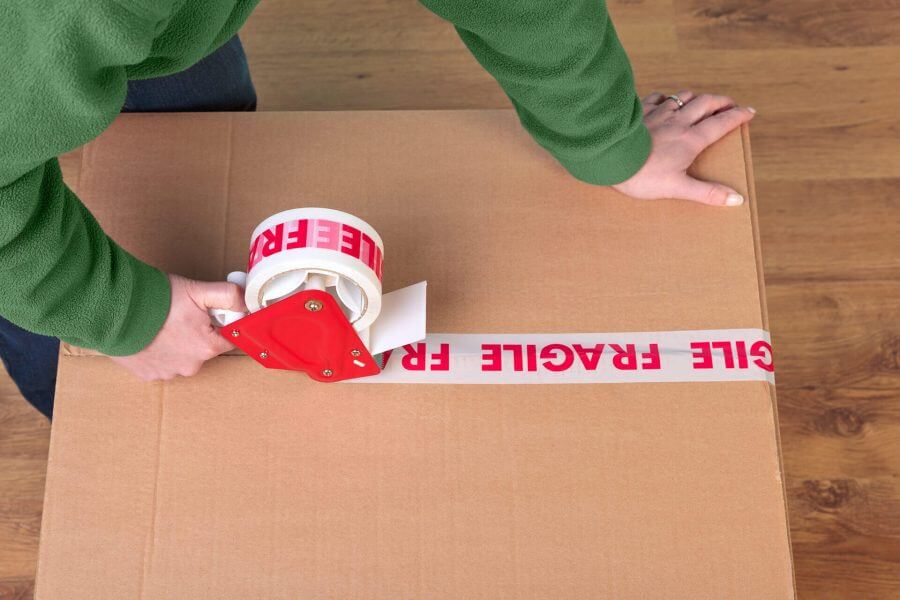

How to Pack a Bicycle for Moving Efficiently
Posted in How-to,Moving Tips & Tricks on May 7, 2024
Learning how to pack a bicycle for moving is crucial for cyclists aiming to relocate their gear without damage. This guide, infused with practical bicycle moving tips, is dedisassemblingsigned to navigate you through the meticulous process of preparing, , and securing your bicycle. By adhering to these instructions, cyclists can ensure their bicycle’s integrity during the cross-country moving process.
What should you know about how to pack a bicycle for shipping? First, select bicycle transport options that best suit your needs. This will ensure the bike’s safety throughout its journey. Start by cleaning the bike and conducting a maintenance check. Disassemble key components such as wheels, handlebars, and pedals. Use quality packing materials like bubble wrap and foam padding to protect the frame and parts. Securely pack each component in a bike box or case, using additional padding to prevent movement. Label the package clearly to facilitate careful handling by long-distance movers.
Prepare the Bicycle for the Packaging Process
Preparing a bike for relocation is a critical initial step that ensures the entire process of relocating efficiently unfolds without hitches. This stage involves evaluating and prepping the bicycle to withstand the transit journey, setting a solid foundation for the subsequent packing steps.
It’s not just about dismantling. It’s about knowing each part is ready and secure, minimizing the risk of damage. This preparation is pivotal as it not only protects the bicycle but also simplifies the reassembly process upon arrival.
Clean It and Carry out a Maintenance Check
Before you plan a relocation, it’s crucial to add the bicycle to move-out cleaning tasks. Cleaning the bicycle not only prevents the transfer of dirt and grime to the new location but also provides an excellent opportunity to perform a thorough maintenance check.
Start by wiping down the frame and components with a damp cloth, using a brush to remove buildup from hard-to-reach areas, and lubricating moving parts. Checking tire pressure, brake functionality, and gear operation should also be done. This process not only guarantees that the bike is in top-notch condition for the move but also identifies any potential issues.

Gather Essential Moving Supplies
When planning to move cross country, securing the right mix of different packing materials becomes a crucial step. To adequately prepare the bike for transport, you must gather several relocation essentials if the ride is to be relocated safely:
- Bubble wrap for wrapping around the frame and parts to protect against scratches and dents.
- Foam padding offers additional protection, especially for more vulnerable areas.
- Bike box or a special bike case is a durable container designed to hold the bike securely.
- Packing tape seals the box or case, so everything stays inside.
Buy Bike Boxes for Relocating
It’s imperative to select the best size boxes for moving to make sure everything relocates safely. Bike boxes for moving are engineered to offer maximum protection against the rigors of transport since they are made from durable and sturdy materials. Make sure the bike fits perfectly within the box to minimize the risk of damage during transit. It’s not just about finding any box.
It’s about finding the right one that aligns with the bike’s specific dimensions and needs. This careful selection process guarantees that the bike, along with any accompanying gear or accessories, is shielded throughout its journey to the new destination.

Disassemble the Bicycle Carefully
When it comes to the best way to ship a bicycle, disassembling it with care stands out as a pivotal step to make sure a stress-free relocation is carried out. This method not only simplifies the packing process, allowing you to pack efficiently but also plays a crucial role in protecting the bike.
What is more, you significantly reduce the risk of damage, from scratches to more severe impacts. This approach aids in optimizing the use of space within the shipping container or box, allowing for more organized transport.
Carefully Remove Wheels, Handlebars, and Pedals
Tackling the disassembly of the bicycle is an integral item on the moving to-do list, requiring precision and care. Begin by addressing the pedals. Employ a pedal wrench for their removal, turning them in the appropriate direction to loosen.
Next, shift the focus to the wheels, utilizing a quick-release lever or an Allen key to detach them from the bike frame. The handlebars are next, with a wrench or Allen key necessary to loosen and remove them, taking care to preserve the integrity of the bike’s alignment and setup. Lastly, don’t overlook the seat and post — extract these components and set them aside in their protective bag.
Organize and Label the Parts
After disassembling the components, meticulous organization and labeling become crucial for a smooth reassembly process upon arrival at the new destination. Sort the detached parts into categories based on their function and placement. Each category should then be stored in individual plastic bags or containers with clear labels indicating their contents.
Utilizing a system of color-coded stickers or tags can further simplify the identification process, making sure that even the smallest screws and bolts find their way back to the correct spot. This method minimizes the chances of misplacement or confusion.

Step-by-Step Guide on How to Pack a Bicycle for Moving Efficiently
Follow the correct bike packing instructions to protect the components and make the relocation easier for you. Our tips serve as a comprehensive roadmap, detailing each step for how to pack a bike box.
By adhering to these guidelines, individuals will know that every part of the bicycle is meticulously wrapped and protected. The process, while intricate, is designed to provide peace of mind, knowing that the necessary precautions have been taken.
Box Up the Frame
When it’s time to box up the frame and prepare for the movers’ arrival, start by positioning the frame inside the box in a vertical alignment, making sure the rear dropouts are facing downwards. This specific placement is pivotal for the protection of the rear derailleur. It should be oriented towards the front of the box. Such a careful arrangement is designed not only to protect the derailleur and its hanger from any potential damage during transit but also to free up space within the container.
Secure the Frame With Cushioning Materials
Wrap the frame tubes in foam tubing or pipe insulation, focusing particularly on the chainstays and seat stays, which are more susceptible to contact with either the box walls or other parts. For added security, use bubble wrap as an additional layer of protection, especially around areas prone to impact. Secure all cushioning materials in place with zip ties or Velcro straps. They will stay snug against the frame throughout the move.
Remove the Detachable Fork
Next in the packaging schedule is addressing bikes equipped with a detachable fork. Once detached, place the fork securely near the frame within the packing container, taking care to avoid any direct contact between the fork and the frame that could lead to damage. Wrapping the fork in bubble wrap or surrounding it with foam tubing provides an effective cushion.
Place the Wheels in a Wheel Bag
Once the wheels have been removed from the frame, they should be placed into a wheel bag, a protective measure that significantly reduces the risk of scratches, dents, or other forms of damage. Wheel bags are specifically designed to cushion the wheels, not only from external pressures but also from any potential harm caused by contact with other packed components.
Package the Rest of the Bike - The Saddle, Pedals, and Watter Bottle Cage
After addressing the major components, attention must turn to the remaining parts of the bicycle, such as the saddle, pedals, and water bottle cage. Each of these items requires individual wrapping, preferably in bubble wrap or a similar protective material. Once securely wrapped, these smaller components can be placed within the spaces around the frame inside the box or in separate, clearly labeled bags if space allows.
Seal the Bike Box With Tape
Once all components are securely packed inside the container, the final step involves sealing it with high-quality packing tape. This action is not merely about closure but ensuring the contents are protected from external elements and remain intact during transit. The tape should be applied generously along all seams and edges, with additional reinforcement at stress points to prevent accidental openings.
Properly Label the Carton For Movers
Clear and comprehensive labels on each side of the carton are necessary so that cross-country movers handling it are aware of its contents and the need for careful transport. Include details such as “Fragile,” “Handle With Care,” and “This Side Up” to communicate how the carton should be treated. Furthermore, listing a summary of the packed items and their destination can aid in the organization and prioritization of the move.

Select a Relocation Company That Can Ship a Bicycle
When the need arises to select moving services for bicycles, it’s critical to approach the task with diligence. The initial step involves researching companies that specialize in or are experienced with handling cycles for long distances.
To choose a cross-country moving company that meets your needs, compare their services, pricing, and customer reviews. An essential part of this vetting process is conducting a USDOT check on the Federal Motor Carrier Safety Administration website. This check provides insight into the company’s legitimacy, safety records, and compliance with transportation regulations. A reputable company that you could relocate with confidence is Cross Country Movers.
Ask About Packing Services if It’s a Last-Minute Relocation
In scenarios where time constraints make self-packing impractical, exploring the benefits of moving with the help of a professional company becomes invaluable. Apart from standard cross-country moving services, many companies offer specialized packing services.
Entrusting the packing to experts not only ensures that the bike is prepared for transport using the best practices and materials but also alleviates the stress associated with last-minute preparations. This added service can be a game-changer, providing peace of mind that your ride will be handled with care and expertise from start to finish.
Have Experts Ship Your Bike – Cross Country Movers Are the Best
By following the detailed steps outlined — from gathering essential supplies and disassembling the bicycle to carefully packing each component and choosing a reputable company — you can significantly mitigate the stress and potential for damage associated with moving across country.
For those seeking a comprehensive solution that extends beyond just relocation and packing services, Cross Country Movers stands out as the best choice. Our long-distance moving company not only specializes in handling bikes with the utmost care but also offers car shipping services, making us a one-stop solution. If you’re planning a move and want to make sure your prized possessions are in the best hands, contact us, Cross Country Movers.
Frequently Asked Questions
How Do I Choose the Right Box for My Bicycle?
Selecting the appropriate container involves considering the bike’s dimensions. It is crucial to provide a snug fit that prevents any unwanted movement. The choice should be based on the cycle’s specific requirements, including size and structural design.
Can I Pack My Bicycle Without Disassembling It?
Packing cycles in their entirety without disassembly is not recommended due to the increased risk of damage. Disassembling key components allows for more compact and secure packaging, enhancing protection. This approach aids in utilizing space more efficiently within the container.
What’s the Best Way to Protect My Bicycle’s Gears and Chain During a Move?
To protect gears and chains during transport, it is advisable to clean and lubricate these parts first. Wrapping them in protective materials such as bubble wrap or foam padding prevents scratches and other damage. Secure attachment to the frame with zip ties or Velcro straps guarantees they remain in place.
How Should I Handle Electric Bicycles Differently When Moving Cross Country?
Handling electric ones requires extra precautions due to their electronic components and battery. The battery should be removed and packed separately, adhering to safety guidelines for transporting lithium batteries.
Are There Movers Who Specialize in Transporting Bicycles?
Yes, some companies offer services specifically tailored for their transportation. These specialists have the expertise and equipment to handle bikes of all types, including standard, racing, and electric models. Their services often include custom packing solutions and appropriate transportation methods.






